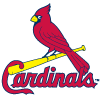With the final weekend before Opening Day upon us, let's take a look at some players who make good, or at least plausible, targets for a keeper-league Stars and Scrubs auction strategy.
While in deep formats, such as 12-team AL-only or NL-only leagues, Stars and Scrubs is dangerous due to the possibility of getting non-contributors among the scrubs, it's also sometimes your only real course of action. With inflation putting tremendous salary pressure on the better players, trying to take a more balanced approach to roster construction is tough. You almost need a certain number of low-priced players capable of returning a healthy profit above their salaries to recoup what you're losing by buying established players at a premium.
Let's take a step back for a second, though, and explain what inflation is in keeper leagues and how it impacts salaries at the auction table.
Inflation is what happens in a keeper league when a significant number of players get protected below the value they're projected to produce. It's fairly easy to calculate. Add up everyone's starting budgets, subtract the salaries of all protected players, then divide by the starting budgets minus the projected value of all the protected players. The actual formula looks something like this:
(Starting budgets - protected salaries) / (Starting budgets - protected values)
Basically, you've dividing the amount of money at the table by the amount of talent at the table. If there's more money than talent, then prices go up. That seems pretty simple
With the final weekend before Opening Day upon us, let's take a look at some players who make good, or at least plausible, targets for a keeper-league Stars and Scrubs auction strategy.
While in deep formats, such as 12-team AL-only or NL-only leagues, Stars and Scrubs is dangerous due to the possibility of getting non-contributors among the scrubs, it's also sometimes your only real course of action. With inflation putting tremendous salary pressure on the better players, trying to take a more balanced approach to roster construction is tough. You almost need a certain number of low-priced players capable of returning a healthy profit above their salaries to recoup what you're losing by buying established players at a premium.
Let's take a step back for a second, though, and explain what inflation is in keeper leagues and how it impacts salaries at the auction table.
Inflation is what happens in a keeper league when a significant number of players get protected below the value they're projected to produce. It's fairly easy to calculate. Add up everyone's starting budgets, subtract the salaries of all protected players, then divide by the starting budgets minus the projected value of all the protected players. The actual formula looks something like this:
(Starting budgets - protected salaries) / (Starting budgets - protected values)
Basically, you've dividing the amount of money at the table by the amount of talent at the table. If there's more money than talent, then prices go up. That seems pretty simple in theory, but in practice, inflation becomes a very hard thing to manage and juggle in the heat of the moment.
First and foremost, that inflation isn't going to apply equally to all players. A $1 endgame buy is still going to cost $1, even in a league with 20 percent inflation. A $2 endgame player will still cost $2. Even a $5 buy could still go for $5. At the end of an auction, relative remaining budgets and your competitors' maximum bids are what drives pricing, not inflation.
At the other end of the scale, though, 20 percent inflation doesn't necessarily mean that a $30 player will go for about $36. You should be so lucky. Instead, his salary will probably push up to and even tip over the $40 plateau. All those extra dimes and quarters not being spent on the small fry get saved up and shoved in when the top names come up for bid.
The higher the inflation rate, the more severe this effect will be. For instance, in the 18-team mixed RotoWire Staff Keeper League (the SKL), which is entering its 11th season, here are some of the salaries of players bought at auction earlier this month:
Clayton Kershaw $74 (projected re-draft value: $44)
Andrew McCutchen $53 (PV: $31)
A.J. Pollock $51 (PV: $26)
Chris Davis $50 (PV: $27)
Stephen Strasburg $50 (PV: $27)
Jose Bautista $49 (PV: $29)
Madison Bumgarner $48 (PV: $31)
Felix Hernandez $44 (PV: $22)
Joey Votto $44 (PV: $22)
Justin Upton $42 (PV: $25)
Adam Wainwright $40 (PV: $20)
I'm starting to think we should rename it the Weimer Keeper League, as we're beginning to approach hyper-inflation levels. Due to the league's structure, where both minor leaguers and reserve draft picks end up with very low initial salaries if they become active players, inflation in the league is through the roof. (The team that dropped $74 on Kershaw also has Francisco Lindor, Maikel Franco and Javier Baez all on $3 contracts.) That not only results in huge bidding wars on elite talent, or for players who carry positional or categorical scarcity concerns (catchers, closers, speedsters, etc.), it also makes for some interesting protected lists. For instance, three players (Miguel Cabrera at $50, Edwin Encarnacion at $47 and Jose Altuve at $42) were protected with salaries north of $40, which I think is a record for the league, not to mention the boatload of players such as Max Scherzer, David Price, Buster Posey, Prince Fielder, heck, even Todd Frazier (!) who got protected with salaries in the $36-$39 range.
Chances are, your league isn't that bad. But in leagues where inflation takes a hefty toll, I always try to keep one thing in mind before I make a bid. Is there any chance the player can actually earn this salary? I don't mean even a good chance. I mean any chance at all.
A couple of years ago, RotoWire colleague Chris Liss did a fun little exercise where he compiled the stats on what would have been the greatest fantasy baseball seasons in history, if fantasy baseball had existed as long as baseball itself. The names you'd expect to be on it are there (Ruth, Cobb, Hornsby, etc.) but among the modern players, Larry Walker's 1997 season stands out. A .366 average in a ton of at-bats, 49 home runs, 33 steals, 130 RBI and 143 runs; and that incredible season, aided by Coors Field at the height of its offense-boosting powers, was still only worth $66. Alex Rodriguez's 54-HR 2007 season? Only worth $61. Alfonso Soriano's near-40 HR/40 SB 2002 season? $53.
Now, those values were calculated based on a 12-team only format, not an 18-team mixed league like the SKL, but you get the general idea. For a player to earn at least $50, he's going to have to do something fairly extraordinary, if not downright historical.
Even in leagues where inflation isn't quite as extreme, it's easy to get sucked into a dizzying bidding war if there's only one great player available at a position, or only one guy left on the board who seems likely to steal 30 bases. Keeping in mind the question of whether a player can possibly earn back that salary or not can save you from making a bid you'll regret later.
The problem is, you have to spend your money somewhere, and anybody good is going to be too expensive. So who should you target? Again, it comes back to that question of what's possible. Your targets in inflation-plagued leagues should be players who actually have a chance of earning back their inflated salary, and the higher the chance, the better. Certain kinds of players, for various reasons, tend to fall into the sweet (or at least less bitter) spot of getting bid higher than their projections, but lower than their vaguely plausible production ceiling, and these are the players at whom you should be looking.
Below I've listed one hitter and one pitcher from each division, along with their projected auction salary in a 12-team only re-draft format, to give you an idea of the kinds of players and factors to look for in "inflation-buster" targets.
AL East
Adam Jones, Bal (PV: $24) - A relatively disappointing 2015 marks Jones as a player seemingly on the decline. He doesn't run any more, and his .269 batting average was the lowest of his career. But this is still a player with five consecutive 25-plus HR, 80-plus RBI seasons who is hitting in the heart of a loaded lineup. Assuming his BABIP and batting average rebound to their usual levels (which, given that he'll turn 31 later in the season, could be a big assumption) he could easily earn an inflated salary, as more hits lead to more RBI and run opportunities.
Craig Kimbrel, Bos (PV: $20) - Getting traded twice in two years can subconsciously make a player seem like he's damaged goods, and the fact that Kimbrel is coming off a season with his worst ERA and WHIP since emerging as a full-time closer in 2011 will play into that perception. He's also never had a K/9 rate below 13.2, though, and last year's average fastball velocity of 97.3 mph was the highest of his career. In keeper leagues it's almost always better to find cheap closers rather than paying top dollar, but if you have a title-worthy squad that just needs a saves boost, Kimbrel could be an excellent target.
AL Central
Ian Kinsler, Det (PV: $21) - Kinsler is one of those boring old guys who's been around forever and gets taken for granted a little. True, playing a position like second base gives his auction salary a scarcity boost. But at 33 there's no upside to be found with him, and his 11 home runs last season were his lowest total since 2010. The youth-chasers won't want him, and anyone who had him last year probably feels like he was a disappointment. That's exactly the kind of player who can come at a discount, relatively-speaking, at an inflation-driven auction.
Jose Quintana, ChW (PV: $16) - He's been remarkably consistent, topping 200 innings in three straight seasons with ERAs in the 3.30-3.50 range, WHIPs in the mid-1.2s and K/9 rates in the 7.0-8.0 range, He's also won exactly nine games in each of those three seasons, which has put a significant damper on his fantasy value. Quintana might finally be slipping into that zone where he gets forgotten or dismissed as nothing more than a mid-rotation guy, which could present a buying opportunity. Add another 5-6 wins onto his usual numbers, and he's suddenly a bargain.
AL West
Ian Desmond, Tex (PV: $16) - There's a lot of risk and uncertainty in Desmond's profile. After three consecutive 20-20 seasons, his power and speed both took an alarming decline as his strikeout rate continued to spike (career-high 29.2 percent in 2015). Then in the offseason, it seemed like nobody wanted him before the Rangers brought him aboard to play not shortstop, but left field. On top of all that, he has two stud prospects in Nomar Mazara and Joey Gallo pushing hard for spots, so if Desmond struggles in his new position and new surroundings, he could be relegated to expensive utility player in short order. All that said, the upside is obvious too. Moving to a hitter's haven like Globe Life Park should help his contact-driven offensive approach, and he does have those three 20-20 seasons on his resume. If the uncertainty keeps his price somewhat reasonable, he could be worth taking on that risk.
Cole Hamels, Tex (PV: $24) - Hamels probably went for big FAAB bucks last year in your AL-only league, but there's less incentive to throw crazy money around on him now. Hamels' 3.65 ERA was his worst since 2009 (also the last year he failed to throw 200 innings), and at 32 there could be a perception that his best years are behind him. That could well be true, but he should still have a few very good seasons left in him even if he never touches his 2011 rate stats (2.79 ERA, 0.99 WHIP) again. This is a case where auction psychology can play in your favor. Tossing Hamels' name early, while younger, more exciting aces like Chris Sale and Chris Archer are still available, could allow you to land Hamels at a cheaper salary than he might otherwise command.
NL East
Bryce Harper, Was (PV: $41) - Wait, what? Won't Harper attract the biggest of bidding wars if he's available? Yes, but when looking for inflation busters, we're looking at a player's theoretical upside, and in Harper's case we don't know what that is yet. If any hitter has a chance of producing a massive campaign that lands him on a future list of greatest all-time fantasy seasons, it's him. Look at it this way. If Harper cranked out a .330-50-130-110-20 kind of line and wins the NL Triple Crown, would you be all that surprised?
Julio Teheran, Atl (PV: $16) - Expert opinions are mixed on Teheran, and understandably so. He regressed badly last year, but based on measures like swinging strike rate, he looks poised for a strong rebound. On the other hand, pitchers who keep lowering their arm angle as Teheran has done often are trying to pitch around some sort of shoulder issue, which doesn't bode well at all. Those bad 2015 numbers and those questions should protect him from getting hit with too much inflation at the auction table.
NL Central
Jason Heyward, ChC (PV: $22) - Heyward's been around forever, it seems, but he's still only 26. Back-to-back 20 steals seasons are nice and could drive his salary higher than you'd like in a SB-starved player pool, but he's hit only 38 total home runs the last three years and it doesn't look like he'll ever turn into the power hitter people hoped. Then you look at his career .311/.376/.522 line in 90 at-bats at Wrigley Field, and the possibility of another 25-HR season doesn't seem so unreasonable. If you can get him at a salary that assumes another 13 homers, and he doubles it, you could be laughing all the way to a title.
Adam Wainwright, StL (PV: $22) - Older starters coming back from injury-plagued seasons tend to make people leery when it comes to bidding on them, but it's important to remember that Wainwright's injury wasn't to his arm but was a fluke Achilles' tendon tear. He looked like the same guy he's always been prior to getting hurt last year, and he'll probably be the same guy in 2016. In an NL stacked with sexy younger aces, Wainwright could be a relative bargain.
NL West
Brandon Crawford, SF (PV: $17) - Pity the poor fantasy GM who protected Crawford on a "C" contract last year, only to watch him bust out. If the Giants' shortstop is available at your auction table, there's a good chance his 21-HR campaign could be viewed with some skepticism, given that he entered 2015 with just 26 career jacks. If enough people are worried about regression, there will be less real competition for his services despite the fact that his position is a bit of a wasteland in the NL (we have Alexei Ramirez as the fifth-most expensive NL shortstop, which is staggering.) However, there's really nothing in his profile that suggests he's going to give back a large share of his 2015 gains other than the fact that he'd never done it before. If he maintains his power stroke, and gets just a slight BABIP boost, he could easily earn back an inflation-driven salary.
Kenta Maeda, LAD (PV: $18) - Fantasy players have become more comfortable going after foreign imports in recent seasons, thanks to the success of players like Jose Abreu and Jung-Ho Kang, but the last high-profile Japanese pitcher to cross the ocean was Masahiro Tanaka, and he hasn't exactly set North America on fire. Maeda also had a big workload back home and has to be considered at least some kind of injury risk after the unusual, incentive-laden contract he accepted from the Dodgers once they got a look at his medical file. Now, just because Tanaka has had trouble staying on the mound doesn't mean Maeda will as well, but the uncertainty does create a buying opportunity if it causes people to hesitate just a bit at the auction table.
























